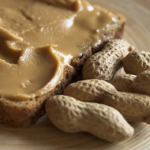Is Peanut, Fructose, Cabbage, Tomato, or Tea Bad for Gout?
During flare-up, gout can be so painful. The good news, it is extremely treatable, too. Diet can play a key role in the treatment plan for this kind of arthritis. But there are also lots of issues and myths associated with diet for gouty arthritis. How about tea (green tea), tomatoes, cabbage, fructose, and peanut? Are they bad for gout?
Peanuts are one of good sources for essential nutrients, especially plant-based protein. However, they have purines content, too. The good news, they are not categorized into high-purine foods.
Purine is a protein that acts as fuel for the production of more uric acid in the body. Yap, if it breaks down it becomes uric acid. And high uric acid can be an alarm for another flare of gout to recur. For this reason, people with gout are commonly recommended to limit foods high in purines.
Peanuts are commonly considered safe for people with gouty arthritis. Even eating them in moderation may provide health advantage to help control and treat gout.
Protein is essential nutrient for the body. It can be found in many foods. Unfortunately, not all of these foods are healthy, though they contain some protein.
For instance, animal protein source such as meat is high in saturated fat. And it’ has been confirmed that saturated fats are not only bad for blood cholesterol (they play a key role in increasing LDL ‘bad cholesterol), but they also have a role in reducing the ability of the body to remove uric acid.
 In other words, if you have a wide variety of healthy sources for protein, this can help you reduce the daily intake of saturated fats. And peanuts can be one of these healthy choices.
In other words, if you have a wide variety of healthy sources for protein, this can help you reduce the daily intake of saturated fats. And peanuts can be one of these healthy choices.
But again, you need to eat peanuts moderately. Too much consumption can increase your calorie intake which may contribute to weight gain, and obesity is bad for arthritis (including gout).
And remember that peanuts contain some saturated fats, too – though most of the fats (about 80 %) are healthy fats (unsaturated fat). If you eat them too much, this can be counterproductive in your effort to keep your saturated fat intake low.
Actually, fructose is a kind of simple carbohydrate (simple sugar). And in these modern livings where fast foods are overwhelming, fructose can be found easily in many foods. Even it can naturally found in some veggies and fruits, too.
According to a study released in the NCBI, fructose (particularly for fructose-rich beverages that use HFCS ‘high-fructose corn syrup‘) may be bad for gout since its role in triggering the increased serum uric acid levels.
Fructose-rich beverages include carbonated beverages, orange juice, baked goods, jellies, canned fruits, or other beverages that use corn syrup, raw syrup, brown sugar, and white sugar.
Unfortunately, there is still no clearly guideline of the safe amount of fructose you can consume. But if you have gout, it’s commonly recommended to avoid any sweetened-beverages with high-fructose corn syrup!
Honey, some fruits and vegetables contain fructose, too – should you avoid them? Fructose naturally found in foods is considered safe for gout. But again, eat them in moderation!
In general, there is no specific fruit to avoid if you have gout. But since kidney stones can be a complication of this joint disease, sometime certain fruits may be asked to be avoided – see more in this post!
Most vegetables are safe for gout, though there are some that contain purines. Cabbage has purine content, but not too high. In general, this vegetable doesn’t belong to foods you need to avoid if you have gout – particularly true as long as you consume it in moderation.
Even cabbage may help provide pain relief when your gout strikes – especially for red cabbage, it has cyanidin, a substance that give it color. Cyanidin is naturally found in cherries, too – a fruit that is thought may help lower uric acid.
Some sufferers find that their pain improves after wrapping some cabbage leaves around the joint. However, the effectiveness of cabbage to help provide pain relief in gout is not scientifically proven yet.
Overall, cabbage is loaded with various health-properties, including vitamins (such as vitamin C), fiber, iron, calcium, phosphorus, and other minerals.




TAKING CURD , RICE , LEMON GRASS TEA IS HELPHUL TO REDUCE FURIC ACID IN BLOOD